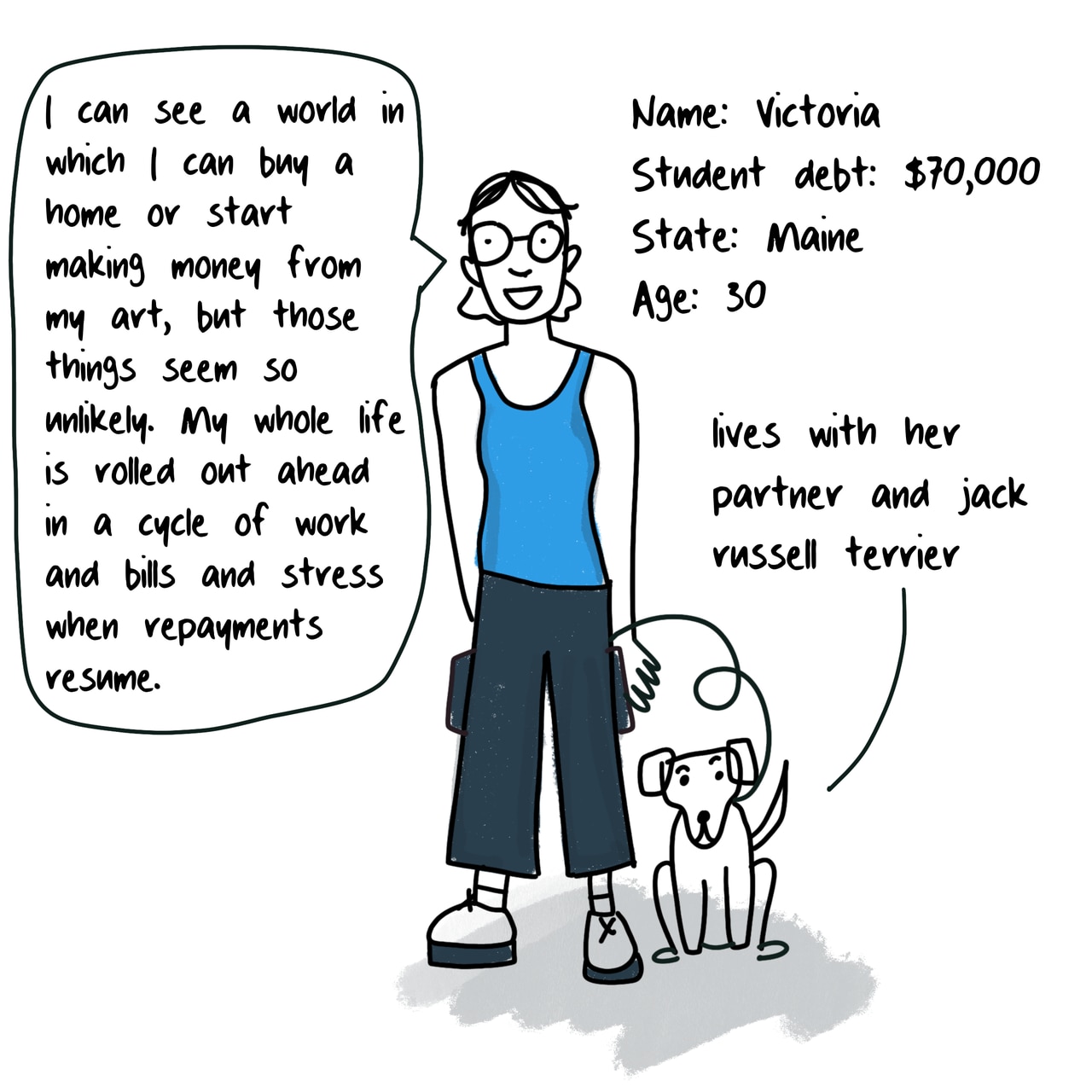Student loan debt stories: âBack to living paycheck to paycheckâ
For a lot of people, resuming student loan debt payments will mean their lives are turned upside down and inside out. In short, people are worried about their finances, future, family and more.
Understanding the weight of this debt, Reckon has asked readers to tell us what debt relief would mean for them and how paying back their loans would shake up their world. They appear weekly in the Broke & Bothered newsletter and regularly on our site.
Victoria D. is 30 years old, lives in Maine and has $70,000 in student loan debt.
The following has been edited for length and clarity.
I think it’s unfair when I hear the rhetoric, ‘You didn’t have to go to college’ or ‘You took out the loans, so you need to pay it back.’ As a person who has been told since kindergarten that I was going to college, I don’t know what people expected me or a lot of other borrowers to do, especially when we can’t afford to pay them back.
When the Trump administration started the pause, I was in forbearance while working to get my master’s degree in fine arts.
But quickly into the deep of COVID, I lost all of my income from the university and moved back home to Oregon. I felt like I couldn’t finish my degree and that I didn’t know how to get a job in this climate, so I started working in a restaurant.
I didn’t have to panic about some bills like student loan debt that I knew were gonna come down the pipeline eventually as we left the emergency mode of COVID.
For the first time, I was able to save $200 to $300 extra a month for emergencies – almost the same amount I would have been paying on my student loans.
Meet Victoria D. a 30 year old, living in Maine with $70,000 in student loan debt.
What money I did save, was swiftly depleted after my wrist was injured working at the restaurant. Regardless of my health insurance and worker’s compensation, medical debt and my inability to meet my same earning potential with an injury ate into my savings.
Living frugally, saving money and moving back home is great in theory but nothing really prepares you for an emergency even if you have saved for it.
After landing a new job in Maine – a lot less expensive place to live than Oregon – and moving in with my partner, I was given the freedom again to save and even put more time and money into my art.
Right now I’m able to save about $100 a month for emergencies with my new job, which is why things like brake replacements, new tires and doctor appointments feel only moderately traumatizing and scary.
When loan payments start back, I’ll go back to living paycheck to paycheck, which really means skipping preventative care and living in a generally unsafe way.
That little bit of money every month is the difference between me breaking into tears every time I go to the doctor, having to live off of the same prescription for glasses for three years at a time, or when I am forced to drive my car knowing that it might break down on me.
It’s also just a general loss of the future.
Right now I can see a world in which I can buy a home or start making money from my art, but those things seem so unlikely. My whole life is rolled out ahead in a cycle of work and bills and stress when repayments resume.
–
Want to read more student loan debt stories like Victoria’s? Click here to read real stories of people most impacted by the student loan debt crisis.
